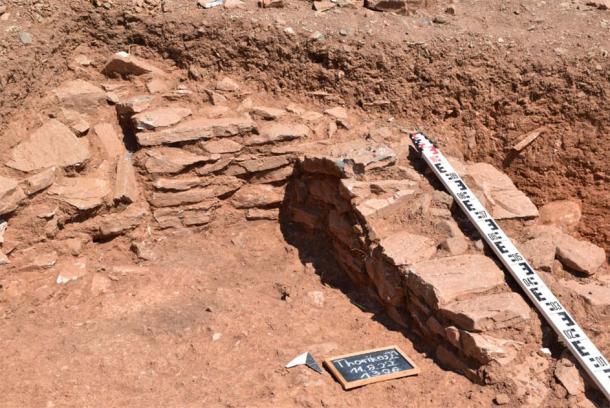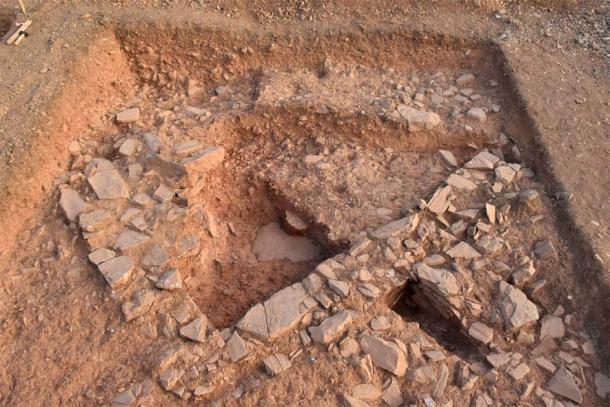
Archaeologists Excavate Earliest Greek Iron Age House Ever Found in Thorikos
A team of archaeologists got quite the surprise when they were digging at a well-established Mycenaean site in Greece located south of Athens. While performing excavations near Thorikos, the researchers from the University of Göttingen in Germany unearthed the ruins of a large house dating back to the 9th or 10th centuries BC - the Greek Iron Age.
Some tremendously ancient ruins have been found on the Attica Peninsula around Athens. But this is the oldest still-standing structure of any type from this time period that has been found in the region.
Exploring Ancient Thorikos, from the Mycenaean Period to the Early Iron Age
The nearly 3,000-year-old house was unearthed in an area where silver mining was common in ancient times. The site of the long-abandoned silver mine in Thorikos is approximately 37 miles (60 kilometers) south of Athens, along the Greek mainland’s southeastern Aegean Sea coast.
This location has already produced some amazing finds, including domed tombs and the remains of a large settlement that would have featured homes, factories, religious sanctuaries, a theater and a cemetery dating back to the Bronze Age Mycenaean period (1,700 to 1050 BC). The Mycenaeans built the first truly Greek advanced culture on the Greek mainland, forming the basis for the later Iron Age Greek civilization that arose in the area.
- Iklaina: Was the First Greek City State of Mycenaean Culture?
- Mycenaean-like Dagger-Sword and Unique Seal Discovered at Anatolian Mound
The structures from the Mycenaean era were found at an unexpected location, just 65 feet (20 meters) from the nearest beach. This means sea levels must have been lower in the area 3,000 years ago, eliminating any chance of dangerous flooding.
In the eighth century BC the residents of the area began constructing their buildings on top of a nearly 330-foot (100-meter) high plateau, indicating a rise in the sea level around this time. During investigations on the southeastern slope of that hill in 2019 the archaeologists from the University of Göttingen found what they believed to be an exposed corner of a wall from a fifth century BC tomb, which would have made sense given what was known about the changes in construction practices that took place starting three centuries earlier.

Iron Age house from the 10th to the 9th century BC. in Thorikos (Attica/Greece): wall corner and door jamb. The walls consisted of layered stones at the base and air-dried mud bricks above. (Thorikos Archaeological Project Gent-Göttingen)
But once they actually began investigating this anomalous wall, the German researchers realized they’d misidentified what had been found. And even more importantly, they’d misdated it.
“It turned out that there was no burial there before, but a building from the 10th to the ninth century BC,” Dr. Johannes Bergemann, the director of the Archaeological Institute at the University of Göttingen, said in a press release issued by his university.
Within the past 12 months, the archaeological team has been busy finishing their excavations and study of this unique old structure. They’ve discovered that it consisted of five or six rooms, and that the largest of these spaces was an expansive paved inner courtyard. There were still a lot of pebbles strewn about in this area, which allowed the experts to surmise how this space was constructed and for what purpose.
The archaeologists analyzed various organic and inorganic features inside the structure, as a way to figure out when it was built. Based on the evidence they collected, they concluded the rock building was constructed between the years 950 and 825 BC, or during the Early Greek Iron Age (approximately 1,050 to 700 BC). They’ve also determined that the structure was used as a home and was not a public building.
“Existing grinding stones for grain indicate a function as a residential building,” Bergemann stated. “The differentiated structure of the residential building speaks for either a complex society or an already developed social hierarchy. Scientific analyzes will show whether there was animal breeding here and whether the silver ore typical of the area was mined at this time.”
- The Golden Age Of Heroes: The Glory Of The Mycenaean Civilization
- The Iliad: Overlapping Mycenaean Bronze Age And Dark Age Allegories

Oldest Greek Iron Age house from the 10th to the 9th century BC in Thorikos. (Thorikos Archaeological Project Gent-Göttingen)
Shedding New Light on Greece’s So-Called Dark Age
The Early Greek Iron Age has often been referred to as the Greek Dark Age. This is because of the trauma associated with the relatively sudden collapse of the Mycenaean Greek culture, after which the area reverted into a more fractured and chaotic state.
After more than 200 years of turmoil the eighth century BC saw the gradual re-emergence of a more unified and recognizable Greek culture, marked by population growth and the formation of new states and city-states and featuring the return of literacy, high-quality art and monumental architecture.
While the newly discovered structure was apparently built during what has been labeled a Dark Age, there is no doubt that at least some of the knowledge inherited from the Mycenaeans had been preserved. The structure on the hillside appears to have been constructed by people of wealth and means, suggesting the so-called Greek Dark Age was not quite as dark as it was assumed to have been in the past.
In the coming months, excavations will be re-initiated at the newly unearthed Iron Age site. Under the sponsorship of the Gerda Henkel Foundation in Düsseldorf, the University of Göttingen archaeologists will seek to discover more secrets about the mysterious Early Iron Age culture of mainland Greece.
Top image: Left, Representative AI generated Iron age house; Right, Iron Age house remains from the 10th to the 9th century BC in Thorikos, Attica/Greece. Source: Left, AI generated; Right, Thorikos Archaeological Project Gent-Göttingen
By Nathan Falde















